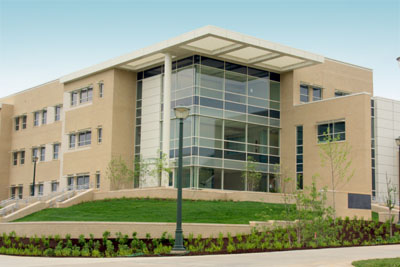The Department of Biology at James Madison University is located in The Bioscience Building (pictured), which is located on the East campus, between the Rose Library and the Physics/Chemistry Building and close to other university facilities. We currently serve ~1,000 undergraduate majors and 17 graduate students. The department offers a wide variety of courses for biology and biotechnology majors, general education, and pre-health profession majors. Our 4-semester core curriculum was developed using National Science Foundation funding.

The 55
Many faculty are supported in their research by external or internal funds. Both individual and shared research spaces are located near faculty offices, and most classes and labs are taught in The Bioscience Building.
Our Vision
Be a national model of excellence in biology through the integration of innovative, learner-centered teaching and scholarship.
Our Mission
The Biology Department provides outstanding educational opportunities for students through a comprehensive curriculum, scholarly activities, and community engagement that inspire learning, develop skills in critical thinking, communication, and ethical reasoning, and prepare them for successful careers.
About the Bioscience Building
The Bioscience building was completed in May 2012 and was purpose-built to house the Department of Biology and Pre-professional Health programs. The building is aiming for silver LEED (Leadership in Energy and Environmental Design) certification for green building design and its major theme is "Biology on Display." This is exemplified in the choice of natural materials in many of the furnishings, biological materials embedded in decorative elements of the building, and the stunning DNA mural visible on all three floors of the main atrium. Also contributing to this theme is the use of glass throughout the building, which not only allows natural light to reach all


